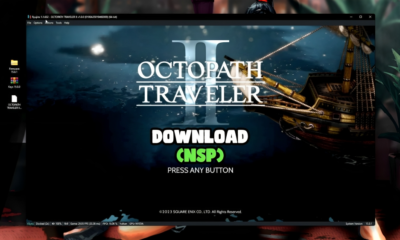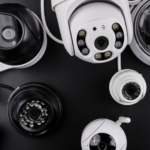Life Style
Riding the Wave of Happy: How to Embrace Positivity in Your Daily Life

Introduction: Why Positivity is Important in Daily Life
Welcome to the bright side of life, where positivity shines like a beacon in the stormy sea of daily challenges. In a world filled with chaos and uncertainty, embracing positivity is not just a luxury but a necessity for our mental and physical well-being. Join us on this journey as we explore the science behind happiness, uncover practical tips for cultivating joy, and learn how to ride the wave of happy in your everyday life.
The Science Behind Positivity: How It Affects Our Brain and Body
Have you ever wondered why being positive can have such a powerful impact on our well-being? Well, it all boils down to the fascinating science behind positivity and how it influences our brain and body.
When we think positive thoughts or engage in activities that bring us joy, our brains release feel-good chemicals like endorphins and dopamine. These neurotransmitters not only lift our mood but also reduce stress and anxiety levels.
Moreover, cultivating a positive mindset can lead to lower blood pressure, improved heart health, and even a stronger immune system. Research shows that individuals who embrace positivity tend to recover from illnesses faster than those with a negative outlook.
So next time you catch yourself smiling for no reason or feeling an overwhelming sense of happiness, remember that your brain and body are thanking you for choosing the path of positivity!
Tips for Cultivating a Positive Mindset:
Cultivating a positive mindset is like tending to a garden; it requires regular care and attention. One effective tip is to practice gratitude daily. Take a moment each day to reflect on the things you are thankful for, no matter how big or small.
Another powerful tool is mindfulness meditation. By focusing on the present moment without judgment, you can let go of negative thoughts and promote inner peace. Surrounding yourself with positive influences, whether it’s uplifting music, inspiring books, or supportive friends, can also help elevate your mood.
Letting go of self-criticism and embracing self-love is essential in fostering positivity. Remember that nobody is perfect, and it’s okay to make mistakes along the way. By incorporating these tips into your daily routine, you can start riding the wave of happiness towards a brighter future filled with optimism and joy.
Gratitude Practice
Gratitude practice is like a daily dose of sunshine for the soul. It’s about taking a moment to appreciate the little things that often go unnoticed in our busy lives. Whether it’s the warm cup of coffee in the morning or a smile from a stranger, cultivating gratitude can shift our perspective towards positivity.
When we acknowledge and express gratitude, it rewires our brain to focus on what’s good rather than dwelling on what’s lacking. It has been scientifically proven to boost happiness levels and reduce stress. So, why not start each day with a grateful heart?
Try keeping a gratitude journal where you jot down three things you’re thankful for every day. Reflecting on these moments of appreciation can create a ripple effect of joy throughout your day. Remember, there is always something to be grateful for – even on the toughest days.
Incorporating this simple practice into your routine can transform your outlook on life and invite more abundance into your world. Start small and watch how gratitude blooms into an attitude of positivity and contentment!
Mindfulness Meditation
Mindfulness meditation is a powerful tool for cultivating positivity in your daily life. It involves bringing your full attention to the present moment without judgment. By focusing on your breath or sensations in the body, you can quiet the mind and reduce stress.
When practicing mindfulness meditation, find a quiet space where you won’t be disturbed. Sit comfortably with your back straight and close your eyes or soften your gaze. Begin by taking slow, deep breaths, noticing the sensation of each inhale and exhale.
As thoughts arise during meditation, acknowledge them without attachment and gently guide your focus back to your breath. Over time, this practice helps increase self-awareness and emotional regulation.
Consistency is key when it comes to mindfulness meditation. Start with just a few minutes each day and gradually increase as you become more comfortable with the practice.
Surrounding Yourself with Positive Influences
Surrounding yourself with positive influences can have a profound impact on your mindset and overall well-being. Whether it’s spending time with supportive friends, reading uplifting books, or following inspirational figures on social media, the energy you expose yourself to matters.
Engaging in meaningful conversations that uplift your spirits and challenge you to grow can help shift your perspective towards positivity. Choose to surround yourself with individuals who radiate good vibes and encourage you to be the best version of yourself.
Attending events or workshops that focus on personal development and self-improvement can also be a great way to immerse yourself in a positive environment. Surrounding yourself with like-minded individuals who share similar values and goals can create a sense of community and support that fuels your positivity.
Remember, the company you keep plays a significant role in shaping your thoughts and emotions. By consciously surrounding yourself with positive influences, you are taking proactive steps towards cultivating an optimistic mindset that will enrich every aspect of your life.
Letting Go of Negativity and Self-Criticism
Negativity and self-criticism can weigh us down, impacting our mental health and overall well-being. It’s essential to recognize when these thoughts arise and actively work towards letting them go. Instead of dwelling on mistakes or shortcomings, focus on growth and learning from experiences.
Practice self-compassion by treating yourself with the same kindness you would offer a friend facing a challenge. Challenge negative thoughts by questioning their validity and replacing them with more positive affirmations.
Remember that everyone makes mistakes; it’s how we learn and grow. Holding onto negativity only hinders our progress. Embrace your imperfections as part of what makes you unique.
Cultivating self-awareness is key in recognizing patterns of negative thinking so you can address them effectively. By letting go of negativity and self-criticism, you open up space for positivity to flourish in your life.
Incorporating Positivity into Your Daily Routine:
Incorporating positivity into your daily routine can significantly impact how you navigate through life. Starting your day with a positive mindset sets the tone for the hours ahead. Consider incorporating morning rituals that bring you joy and gratitude, whether it’s sipping a cup of tea mindfully or journaling about what you’re thankful for.
Movement is also key to embracing positivity. Engaging in regular exercise not only benefits your physical health but also releases endorphins that boost your mood and overall well-being. Find an activity that brings you happiness, whether it’s yoga, dancing, or simply going for a walk outdoors.
Healthy eating plays a role in maintaining positivity as well. Fueling your body with nutritious foods can positively impact your energy levels and mental clarity throughout the day. Remember to hydrate adequately and nourish yourself with foods that make you feel good from the inside out.
Morning Rituals
Rise and shine! How you start your day sets the tone for everything that follows. Establishing morning rituals can make a significant impact on your overall well-being and mindset.
Instead of hitting snooze multiple times, try waking up with intention. Take a moment to stretch, breathe deeply, or simply express gratitude for a new day.
Create a routine that works for you – whether it’s sipping on a cup of herbal tea, journaling your thoughts, or going for an early walk in nature.
Engage in activities that bring you joy and peace – perhaps listening to uplifting music while getting ready or setting positive affirmations for the day ahead.
By incorporating mindful practices into your mornings, you can cultivate a sense of calm and positivity that will carry through the rest of your day. Start each morning with purpose and watch how it transforms your outlook on life!
Exercise and Movement
Are you ready to get your body moving and embrace the power of exercise in cultivating positivity? Incorporating regular physical activity into your daily routine can have a profound impact on your overall well-being. Whether it’s going for a brisk walk, hitting the gym, or practicing yoga, moving your body releases endorphins that can boost your mood and energy levels.
Exercise not only benefits your physical health but also plays a significant role in promoting mental clarity and emotional stability. When you engage in physical activity, you’re giving yourself an opportunity to release stress and tension from both the body and mind. This release can help reduce feelings of anxiety and depression while increasing feelings of happiness and contentment.
Find activities that bring you joy and make them a regular part of your routine. Whether it’s dancing around your living room, going for a run in nature, or trying out a new fitness class, prioritize movement that feels good to you. Remember, exercise is not about punishment; it’s about nourishing both your body and soul.
So lace up those sneakers, roll out your yoga mat, or grab some weights – whatever form of movement speaks to you – and start reaping the many benefits that exercise has to offer. Let movement be a celebration of what your body is capable of achieving as you ride the wave of happy through each workout session!
Healthy
Healthy choices are key to maintaining a positive mindset. Eating nourishing foods, staying hydrated, and getting enough rest are all essential components of a healthy lifestyle that can contribute to your overall sense of well-being. By prioritizing self-care and making conscious decisions that support your physical health, you are setting yourself up for success in embracing positivity in your daily life. Remember, small changes can lead to big results when it comes to riding the wave of happy. So, seize each day with intention and let positivity guide you towards a brighter tomorrow.
Life Style
Navigating Grief: Coping Strategies and When to Seek Help

Grief is a deeply personal and multifaceted experience that affects each individual uniquely. Whether triggered by the loss of a loved one, the end of a significant relationship, or even a major life transition, understanding grief is crucial for anyone trying to navigate its challenging waters.
Understanding the Stages of Grief
The concept of grieving involves several stages: denial, anger, bargaining, depression, and acceptance. It’s important to note that these stages are not necessarily sequential nor are they experienced by everyone. Grief is highly individual, and each person may experience these emotions in different orders or intensities. The key is to recognize that all feelings of grief are valid and that moving through these stages is part of the healing process.
Common Responses to Grief
Grief can manifest in numerous ways. Emotionally, it may appear as overwhelming sadness, bouts of anger, unexpected guilt, or even numbness. Physically, it might affect your sleep patterns, appetite, or energy levels. Such responses are typical and understanding them can help those grieving recognize they are part of a normal process.
Coping Strategies for Grief
Allowing oneself to fully experience grief without judgment is critical. This means acknowledging and accepting your feelings, whatever they may be, without criticism. Support from friends and family can also play a crucial role in managing grief. Being around loved ones can provide a buffer against the isolating effects of grief.
Creating personal rituals can also help. Whether it’s through a memorial service, a personal tribute, or a quiet moment of reflection, rituals can help honor the memory of the lost one and provide solace. Maintaining physical health is equally important; engaging in regular physical activity and eating well can help manage some of the physical symptoms of grief.
Expressing grief through creative outlets such as writing, painting, or music can be therapeutic. It provides a way to process complex emotions and can serve as a release, allowing for healing.
Journey Towards Healing
Navigating grief requires patience, understanding, and sometimes, professional help. Recognizing when to use personal coping strategies and when to seek external support is crucial. For those who feel they need more structured support, this company seems to have good resources on grief: www.happyminds.net.au.
At Happy Minds, compassionate professionals are ready to support you through your grief with tailored therapeutic approaches designed to help you regain a sense of peace and normalcy.
Remember, healing from grief is not about forgetting; it’s about learning to live with the loss in a way that honours the love and connection you had.
Embracing Support and Building Resilience
In the journey through grief, embracing the support offered by friends, family, and professionals can significantly enhance the healing process. Building resilience during this time is crucial and involves developing an understanding that grief, while profoundly challenging, is also an opportunity for personal growth and deepening relationships.
Engaging with a mental health professional can provide not only immediate support but also tools and strategies that foster long-term resilience, enabling individuals to navigate future challenges with greater emotional strength.
Healing Pathways: Finding Peace After Loss
The path of grief is as personal as the relationship you had with what you’ve lost. It twists and turns, laden with emotional upheavals and moments of unexpected relief. Accepting grief as a multifaceted process and embracing the full spectrum of emotions it brings can ultimately lead to profound healing.
While the journey is intensely personal, you don’t have to walk it alone. Utilizing coping strategies, leaning on the support of others, and when necessary, seeking professional guidance can make a significant difference in your healing journey
Life Style
Why Vacpr is Essential for a Healthy Lifestyle: Insights from Experts

Introduction: Defining Vacpr and its role in a healthy lifestyle
Are you ready to kickstart your journey towards a healthier lifestyle? Look no further than incorporating Vacpr into your daily routine! From boosting physical strength to enhancing mental well-being, Vacpr plays a vital role in achieving overall wellness. Join us as we dive into the world of physical activity and uncover why Vacpr is essential for a vibrant, energetic life!
Benefits of Physical Activity: Discussing the positive impact of exercise on physical, mental, and emotional health
Engaging in physical activity, like Vacpr, goes beyond just improving your physical health; it has a profound impact on your mental and emotional well-being as well. When you move your body, whether through cardio, strength training, or yoga, you release endorphins that elevate your mood and reduce feelings of stress and anxiety.
Regular exercise not only strengthens your muscles and improves cardiovascular health but also enhances cognitive function. Studies have shown that physical activity can boost brainpower by increasing blood flow to the brain and promoting the growth of new neurons.
Furthermore, engaging in Vacpr allows you to disconnect from the daily stresses of life and focus solely on the present moment. This mindfulness practice can help alleviate symptoms of depression and improve overall mental clarity.
Incorporating regular physical activity into your routine is a holistic approach to wellness that benefits not only your body but also your mind and spirit. So lace up those sneakers or roll out that yoga mat – your entire being will thank you for it!
Expert Insights: Interviews with health professionals on the importance of incorporating Vacpr into daily routines
Ever wondered what health professionals have to say about the role of physical activity in our daily lives? Well, we’ve got you covered! We sat down with experts to gather valuable insights on why incorporating Vacpr into your routine is crucial for overall well-being.
Dr. Smith, a renowned fitness expert, emphasized that regular exercise not only improves physical health but also boosts mental clarity and emotional stability. According to Dr. Smith, staying active through Vacpr activities like walking, jogging, or cycling can significantly reduce stress levels and enhance cognitive function.
Nutritionist Sarah highlighted the importance of finding a balance between healthy eating habits and consistent physical activity. She stressed that combining a nutritious diet with Vacpr helps maintain weight, strengthen muscles, and improve heart health.
Incorporating advice from these experts into your lifestyle can lead to long-term benefits that extend beyond just physical appearance. So next time you’re debating whether or not to squeeze in some Vacpr time – remember the wise words of these health professionals!
Types of Activities for a Healthy Lifestyle: Exploring different forms of physical activity such as cardio, strength training, and flexibility exercises
When it comes to maintaining a healthy lifestyle, incorporating various types of physical activities is key. Cardio exercises like running, cycling, or swimming not only boost your heart health but also help in burning calories and improving endurance.
Strength training activities such as weightlifting or bodyweight exercises are essential for building muscle mass, increasing metabolism, and enhancing overall strength. It’s not just about looking fit; strong muscles support better posture and prevent injuries.
Flexibility exercises like yoga or pilates focus on stretching and lengthening muscles to improve range of motion and reduce stiffness. They can also aid in relaxation and stress relief by promoting mindfulness and body awareness.
By including a mix of cardio, strength training, and flexibility exercises in your routine, you’re ensuring a well-rounded approach to fitness that benefits both your physical health and mental well-being.
Incorporating Vacpr into Busy Schedules: Tips for finding time to be
Finding time to incorporate Vacpr into your busy schedule can seem challenging, but with some strategic planning and dedication, it is definitely achievable. Start by prioritizing physical activity as an essential part of your daily routine, just like eating or sleeping.
One tip is to schedule your workouts in advance and treat them as non-negotiable appointments. This way, you are more likely to follow through and make time for exercise. Additionally, consider breaking up your workout sessions into shorter bursts throughout the day if finding a solid block of time is difficult.
Another effective strategy is to combine social activities with physical ones. Invite friends or family members to join you on a hike, bike ride, or fitness class. Not only will this make exercising more enjoyable, but it also strengthens social bonds.
Remember that every little bit counts when it comes to physical activity. Whether it’s taking the stairs instead of the elevator, parking farther away from the entrance, or doing bodyweight exercises during commercial breaks – small efforts add up over time.
By incorporating these tips into your daily life and mindset shift towards prioritizing Vacpr as a crucial aspect of overall health and well-being not only feels manageable but also sets you on the path towards a healthier lifestyle that lasts for years to come.
Life Style
Essential Marine Equipment Every Boat Owner Should Consider

Key Takeaways:
- Proper navigation tools are indispensable for safety and efficiency at sea.
- Comprehensive safety gear is vital for emergency preparedness.
- Regular boat maintenance ensures performance and prolongs lifespan.
- Eco-friendly boating practices protect marine ecosystems.
Table of Contents:
- Navigation Tools for Safe and Efficient Sailing
- Safety Gear: Beyond the Life Jacket
- The Role of Communication Devices in Marine Safety
- Anchor Systems: Choosing the Right Setup for Your Boat
- Marine Lighting Solutions for Nighttime Navigation
- Essential Maintenance Tools for Longevity and Performance
- Power Management: Keeping Your Boat’s Electrical Systems Running
- Understanding Marine Electronics and Software
As a boat owner, ensuring that your vessel is outfitted with the right equipment is not just a matter of convenience—it’s about safety, efficiency, and the protection of the environment. Selecting appropriate marine equipment requires a careful consideration of the numerous choices available, as well as an understanding of the essential role each piece plays. In this guide, we’ll explore the core components contributing to a well-prepared boat, touching on everything from navigation tools to eco-friendly practices that every responsible mariner should embrace. Whether sailing close to shore or venturing into open waters, these essentials will stand you in good stead.
The key to successful and enjoyable boating lies in the details. Selecting high-quality, reliable equipment is a game-changer for any seafarer. Take, for instance, Barnegat lights, a critical component that enhances your sea vessel’s functionality and safety. These lights are not just a practical necessity; they also ensure compliance with marine regulations, illuminating your boat for others to see and significantly reducing the risk of collisions during those peaceful but potentially treacherous night journeys.
Navigation Tools for Safe and Efficient Sailing
Mastering the art of navigation is as ancient as seafaring, but modern technology advancements have transformed this critical skill. Today’s navigators can access sophisticated instruments like GPS and radar, which offer detailed insight into one’s surroundings. Some integrate these GPS signals to map routes, visually representing your location relative to underwater features and surface obstacles. Accurate navigation is a matter of reaching your destination and avoiding dangerous waters, conserving fuel, and ensuring a timely arrival.
Safety Gear: Beyond the Life Jacket
While life jackets are the most recognized marine safety equipment, a boat’s safety inventory should be far more comprehensive. High-visibility clothing, immersion suits, and suitable flotation devices are equally important, particularly for those onboard who cannot swim. Advanced safety equipment can signal distress to authorities, leading to a quicker rescue response. Detailed overviews and statistics on the latest safety equipment can be invaluable for boat owners who want to understand each device’s impact on their safety at sea, as highlighted by these safety equipment statistics.
The Role of Communication Devices in Marine Safety
Effective communication is a cornerstone of maritime safety. In the vast expanses of the ocean, the ability to send and receive information can mean the difference between timely assistance and a distress situation going unnoticed. Radios remain a stalwart in marine communication, providing a reliable link to the maritime community and emergency services. Modern advancements even allow for integration with GPS systems for pinpoint SOS broadcasting. Thus, ensuring your boat is equipped with the latest in communication technology can significantly boost the safety of everyone onboard.
Anchor Systems: Choosing the Right Setup for Your Boat
The diversity of anchor systems means there’s a perfect fit for every type of seafloor you may encounter, whether sandy, rocky, or laden with vegetation. The fluke anchor, known for its effective hold in softer substrates, contrasts with the plow anchor, which digs into various seafloor types. Weight, material, and design all play crucial roles in an anchor’s performance—consider your typical boating environment when choosing. A reliable anchor system secures your boat during leisurely stops and offers a safety contingency in emergency scenarios where maneuverability may be compromised.
Marine Lighting Solutions for Nighttime Navigation
Navigating the waters after dark without adequate lighting is as dangerous as unlawful. The selection of proper marine lighting goes beyond essential navigation lights to include floodlights, deck lights, and underwater illumination that can enhance your boat’s safety and aesthetics. LED technology’s energy efficiency and longevity make it a popular choice among boat owners, enabling vessels to be seen by other seafarers and preventing accidental encounters. Understanding the requirements and options for marine lighting is critical to a well-lit voyage and adherence to maritime guidelines.
Essential Maintenance Tools for Longevity and Performance
Maintenance is a continuous process that must be addressed if your boat is to remain seaworthy. Corrosion, wear, and tear can affect even the most robust vessels. Rust removers, marine-grade lubricants, and versatile multitools should be part of every boat’s maintenance kit. Regular checks and tune-ups of the engine, hull, and electronics can help avoid costly repairs, ensuring your vessel remains in prime condition to face the rigors of the sea.
Power Management: Keeping Your Boat’s Electrical Systems Running
Managing the electrical power onboard is a crucial aspect of modern boating. From running essential systems like navigation and emergency lights to powering entertainment devices, efficient energy management ensures that your adventures at sea are not cut short. Renewable energy sources such as solar panels and wind turbines have grown in popularity, offering boat owners an eco-friendly way to maintain their power reserves. These sustainable options benefit the environment and provide peace of mind from self-sufficiency.
Understanding Marine Electronics and Software
Modern marine electronics encompass various navigation, fishing, and boat management devices. For example, sonar technology can be used to help anglers locate their catch, while marine radar systems alert captains to the presence of other vessels and potential hazards. Autopilots can automate navigation, but like all software-driven systems, they require regular updates to perform optimally. Staying abreast of software advancements is critical to ensure the technology aboard remains reliable and effective.
-

 Tech8 months ago
Tech8 months agoGuide to Nextdoorstudios: Your Ultimate Resource
-

 Entertainment8 months ago
Entertainment8 months agoIzanami Backwards: Unveiling the Mysteries
-

 Travel8 months ago
Travel8 months agoTravel Essentials for Women: Your Ultimate Guide
-

 Automotive8 months ago
Automotive8 months agoThe Ultimate Guide to Car Detailing Near Me
-

 Real Estate8 months ago
Real Estate8 months agoChoice Home Warranty Awards: Celebrating Excellence
-

 Entertainment8 months ago
Entertainment8 months agoUnraveling Octopath Traveler II NSP
-

 Home and Garden8 months ago
Home and Garden8 months agoExploring the World of Spelling Bee Forums: Your Ultimate Guide
-

 Entertainment1 year ago
Entertainment1 year agoShowbizztoday.com Entertainment Lifestyle Music Fashion: Your Ultimate Guide

























